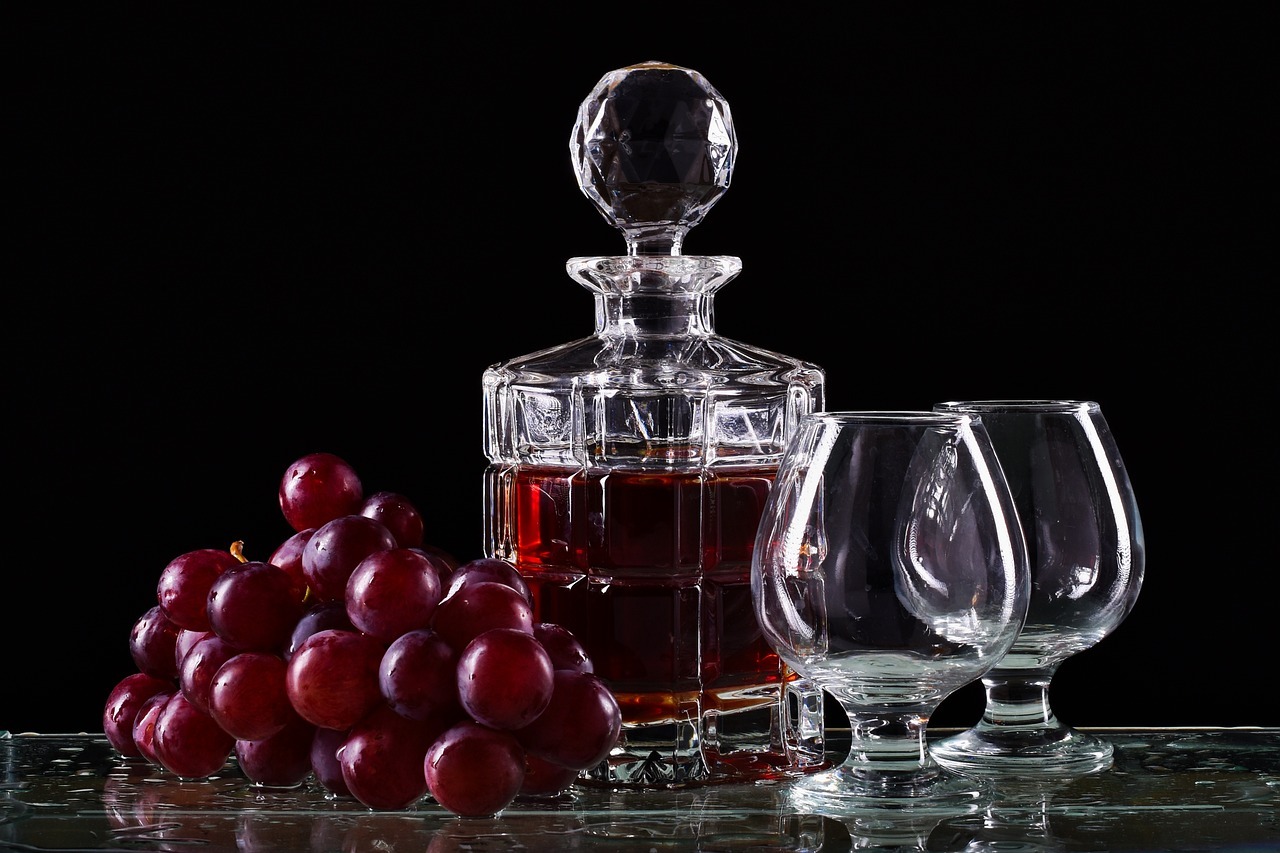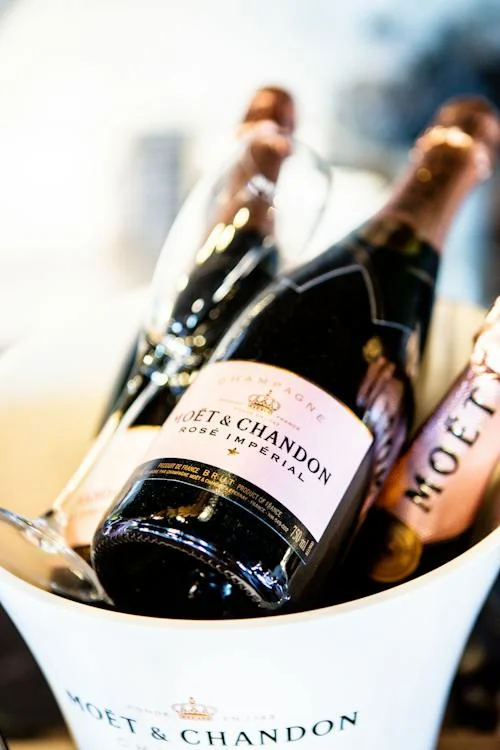When I lived in Paris, a good friend of mine took me to see his family in Burgundy one weekend. I have the greatest memories of his father: a part-time notary, part-time wine collector.
We would all sit around the dinner table and papa Adenot would pull bottle after bottle from the cellar, delighted to share his passion with his son and the strange American visitor. There were a couple of bottles that, when pulled, drew gasps from the other dinner guests, “Mais, non! Tu peux pas!” They were that impressive.
It occurred to me at that moment that I was being spoiled and that I’d probably never taste a better bottle of wine for the rest of my life. But there’s always hope…
Luxury Wine, Humble Origins
Burgundy may be home to some of the most imitated wines in the world, but the region’s wine-making origins are quite humble.
The first Burgundy wine makers were in fact monks. Burgundy’s largest wall-surrounded vineyard, the Clos de Vougeot, was created in 1336 – but you can still visit it (and its giant ancient wooden grape press) to this day. Wine negotiants or “shippers” recognized the high quality of wine produced in the area and contributed to its popularity by distributing it across the Roman Empire.
The result of this history is some of the finest wine from some of the finest grapes in all of France.
Often Imitated, Rarely Matched
The world’s great Chardonnay and Pinot Noir varietals are almost always modeled after these burgundian classics. And yes, “burgundian” is not only a word to describe the great wine region, but also its pinnacled taste.
One of the greatest compliments you could give to a tasty Pinot Noir is to call it Burgundian.
For this reason, Burgundy wines can be quite an expensive category. So let’s break it down. We’ll talk about:
– when & why a wine is more expensive
– when it’s worth paying that extra expense
– best values (what will get you the most bang for your buck)
Three Ways to Evaluate a Burgundy Wine
Every sommelier has their favorite method to predict the taste of a Burgundian wine, but most will use some combination of these three distinctions:
1. Location – Determines Price and Status
2. Wine Type – Determines Taste
3. Producer – Determines Batch Size and Availability
1. Location, Location, Location
Evaluating an address on a bottle of Burgundy wine can be a little tricky since there are so many sub-classes of neighborhoods. Just take a look at this label…
From most broad to most specific, these are the types of classifications you can see on a bottle:
Region – Bourgogne (all of Burgundy)
District – sub districts (ex. côtes de nuits-villages, côte de beaune-villages)
Village – wines from vineyards in a single village, ex. Morey, Saint Denis
Premier Cru – lit. “first class vineyard,” these wines are labeled by Village followed by the premier cru vineyard.
Grand Cru – lit. “top class vineyard,” these wines are the best of the best.
Like most real estate, Burgundy’s hottest addresses cost the most, and that primo price gets passed on to the wine as well.
There is some logic to what makes an address exclusive – and it’s not a 90210 zip code. The best lots are areas that see the most sun and thus drive up the quality (and price) potential for the wine. This in turn increases the demand for that location’s wine, which also drives up the price even more.
In general, we see the most sun (and quality potential) from addresses on the east-facing slopes, which tend to lay on the Côte d’Or…
So you’ve got your generic Bourgogne and your top-class grand cru vineyards, but there’s a whole lot of room for variation in the middle. Just like in butchery, your hamburger patty and filet mignon aside, the rest of the cuts aren’t necessarily better or worse than one another – they’re just quite different.
In this same way, the tectonic shifting plates in the Burgundy region have made for great variety in the flavor styles of wine from different villages. Even grapes that are grown close together can have very different flavor due to these differences in the earth.
It’s such a wide variety that many sommeliers say you can “feel the earth moving” when you drink Burgundy wines from across the region.
As we start talking about flavor profiles, these are the main sub-regions to know:
1. Côte d’Or
2. Chablis
3. Côte Chalonnaise
4. Mâconnais
5. Beaujolais (we’ll come back to this one later)
2. Wine Types: “Classic And… Not Classic”
A classic Burgundy red is a Pinot Noir aged in oak barrels. The nicest wines age longer in newer barrels, making the wine even more oaky (the more oak = the more $ it’ll cost you).
The north half of the Côte d’Or, the Côte de Nuits (see map), produces some of the most famous Pinot Noir in the world.
Classic Burgundy whites come from Chablis or Côte de Beaune (the south half of the Côte d’Or). The Chablis whites are cooler, lighter, and acidic while the Côte de Beaune is more oaky, full bodied and intense.
Does that Côte de Beaune sound like a Chardonnay you’ve had? That’s because it is the model for most California and Australian Chardonnays on the market.
Both the classic Burgundy whites and reds share a common aroma and taste that is best described as “earthiness.” It’s a from-the-earth sensation that is also described as dusty, flinty, minerally, chalky, mushroomy, truffley, forest floor, wet leaves, tea leaves, or barnyard manure.
(Yes, you smelled cat pee in the Loire Valley Guide and now I’m having you taste manure in Burgundy – French wine sure is classy!)
This taste is actually a good thing – and something that varietals (wines modeled after Burgundy classics, but made with Pinot Noir or Chardonnay grapes grown elsewhere) often lack. Varietals can taste like Burgundy grapes, but only a true Burgundy will express the ground where that grape grows.
In general, the not-classic wines are way more affordable. They tend to be a bit more rustic – like a biscuit instead of a croissant – but often offer some of the best values.
The Mâconaisse region produces 3 light to mid-bodied Chardonnays: Mâcon-villages, st. Veran, and Pouilly-Fuissé. The first two tend to be a better value as the Pouilly-Fuissé sometimes is overpriced for its slightly higher name recognition.
The other great value region to check out is the Côte Chalonaisse – it’s just south of the Côte d’Or so it’s styled like the classics but bears less of a pedigree. This means you can score some great, classic-tasting wines at a not-classic price.
Master Sommelier Andrea Robinson recommends these Côte Chalonaisse wines: Rully, Mercurey, Givry, and Montagny.
3. Producer
Domaines are the estate bottlers, which means they grow the grapes and make the wine sold under that name. Domaines also tend to produce smaller batch wines, which makes them a little rarer. Do to their ultimate control over the entire production process, some believe they produce higher quality wines.
Negotiants are the wine “shippers,” which means they either make wine from other grape producers OR age and bottle finished wine from independent growers. Most negotiants do both. Negotiants tend to produce bigger batches, which means you can count on their product being in-stock. Some experts also believe that these wines have a great quality potential because they can glen many sources together and even out imperfections.
What does all of this mean for you? It basically means that there are pros and cons to both types of wine producer, and you should let your own taste preferences and experiences be your guide.
Since that task can be a little daunting, here’s a bit of help from someone with a lot of experience: Master Sommelier, Andrea Robinson.
This is just a teaser of a full 4-page table Andrea leaves in her book, Great Wine Made Simple, so definitely pick up a copy of that if you’d like more suggestions on Burgundy producers.
Beaujolais – In A League Of Its Own
Unlike the other wines in Burgundy, Beaujolais is made from a red Gamay grape (that’s gah-MAY not gay-mee).
You may recognize the name Beaujolais because of the famous Beaujolais Nouveau (lit. “new Beaujolais”) which is released every year as soon as the new crop is harvested. But this isn’t really the good stuff.
A real Beaujolais (not nouveau) will offer a juicy, fruity scent, a succulent smooth-as-silk texture, and a bit of that “earthyness” in the taste.
Because this wine is produced at a much higher volume than the Pinot Noir, it’s also much cheaper, making it a great value.
There are three major Beaujolais appellations: Beaujolais, Beaujolais-Villages, and Beaujolais Cru. Those last two are the best. Here are some recommendations:
Beaujolais Cru
-Brouilly
-Morgon
-Moulin-à-vent
-Fleurie
-Julienas
Beaujolais Villages
-Duboeuf flower label
-Jadot
-Jaffelin
Moreover, Andrea Robinson recommends buying ANY Beaujolais Cru or Beaujolais-Villages you find from the following producers: Michel Tête, Trenel, or Janodet.
This is the fifth part in a six-part series on the big six wine regions in France.
Part one: Taking the ‘Pain’ out of Champagne
Part two: Get to Know Your Bordeaux
Part three: Dive Into the Loire Valley
Part four: All About Your Glass of Alsace
Part six: There’s No Place Like Rhône



